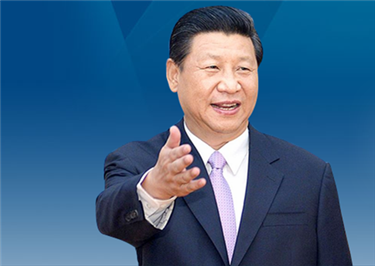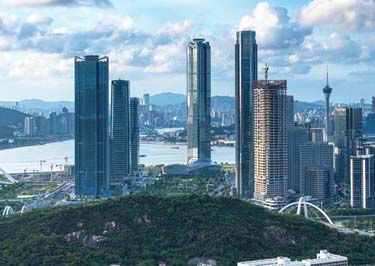Lin Wei-min: Spearhead of Workers Movement
Spearhead of Workers Movement
1
A strike-boycott swept Hong Kong's Victoria Harbor in January 1922 led by two men from what today is Zhuhai: Lin Wei-min of Sanzao Town in Jinwan District and Su Chao-cheng (Su Zhaozheng) of Qi'ao Island, Tangjiawan, Xiangzhou District.
Workers in dire need of better living conditions demanded that ship owners raise wages and end exploitation by their bosses. Ignored and even threatened by the police, they formed the Hong Kong Seamen’s Union and launched a strike with 100,000 workers from most industries participating.
Hong Kong came to a standstill.
The 56-day strike was settled in their favor when Hong Kong-British authorities and capitalists met all terms raised by Lin and three other strike representatives.
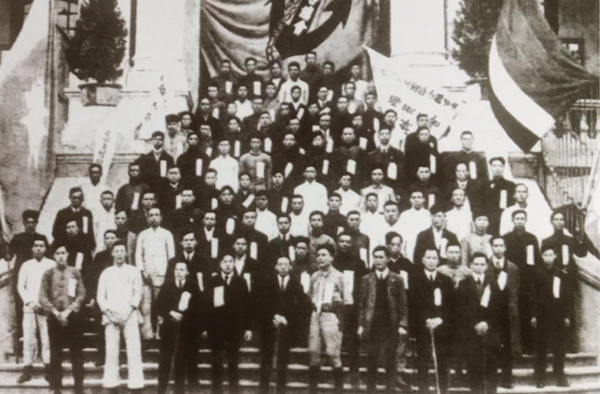
Some staff and seamen of Hong Kong Seamen's Union; Su Chao-cheng and Lin Wei-min, third and second from right in front row [Photo provided by Lu Quan]
From then on, the name Lin Wei-min became enshrined in China's history.
2
Lin was born in Sanzao Town in 1887 and attended school there. He went to Hong Kong with his father at age 19 and worked as a crewman on a foreign vessel.
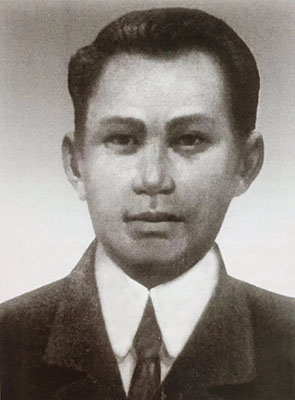
Lin Wei-min (Lin Weimin) (1887-1927)
At that time, Dr Sun Yat-sen was traveling around South Asian countries scheming to overthrow the Qing Court. Lin met Dr Sun aboard ship and began to deliver information, provide shelter, and transport ammunition for the revolutionists.
One day in 1920, when Lin learned that his Su Chao-cheng had won a struggle against abuse by a foreign foreman, he then worked closely with Su to set up a rights-defense organization.
With a year's preparation, the earliest trade union in China –- the Chinese Seamen's Union –- was founded and Lin was elected to the 1st Secretariat of the union, taking charge of communications.
3
Lin attended the 1st National Labor Conference in Canton (Guangzhou) in May 1922, giving a briefing on the seamen strike in Hong Kong and attracting much attention. He set out to help found the Shanghai Seamen’s Union after the conference.
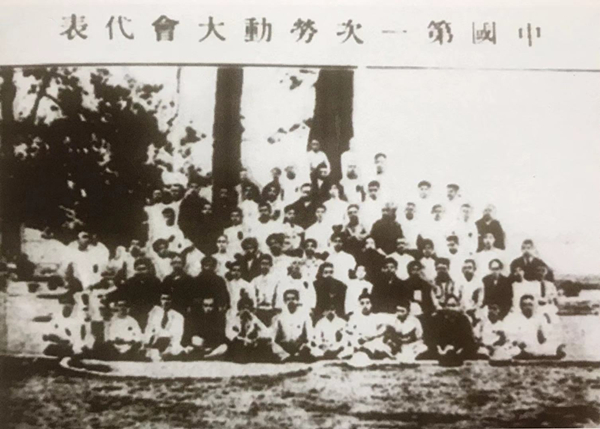
Representatives of the 1st National Labor Conference in Guangzhou on May 1, 1922 [Photo provided by Lu Quan]
Upon recruiting 2,700 members in two months, Lin was elected director of the union in Shanghai.
Demands to China Merchants Steam Navigation Co (CMSNC) for increased wages and welfare improvements were made but rejected, leading to Shanghai's seamen strike.
Using his experience from the strike in Hong Kong, Lin set up a strike affairs office, organized a patrol to maintain order and combat knob sticks, raised funds for striker accommodations, and collaborated with small and mid-sized ship capitalists to isolate the CMSNC.
The 20-day strike succeeded in forcing the CMSNC to meet all terms of the union.
4
Lin attended the International Transportation Workers Congress in the Soviet Union in 1924 on behalf of the Hong Kong Seamen's Union. He joined the CPC in Moscow.
Back in China, Lin initiated the Guangzhou salt boat workers strike, Beijiang privately owned boat workers strike, firers strike, and so on to uphold the legal rights and serve the interests of seamen.
The 2nd National Labor Conference was held in Guangzhou on May 1, 1925 and the All-China Federation of Trade Unions was founded. Lin was appointed chairman of the 1st Executive Committee due to his prominent contributions to worker movements.
5
The May 30th Incident, in which Chinese demonstrators were killed by British police in Shanghai, then occurred. The federation then launched strikes in both Hong Kong and Guangzhou in support of the Shanghai workers.
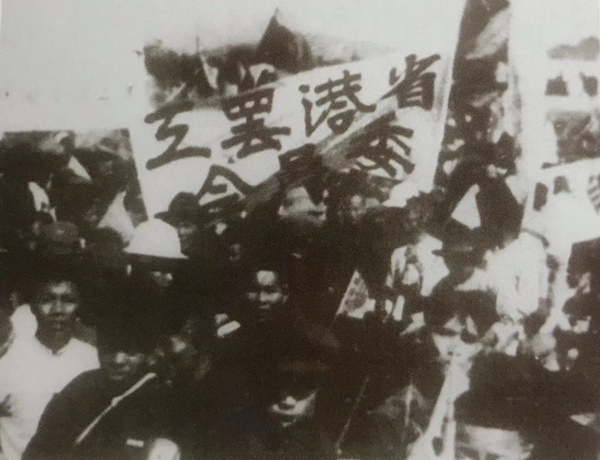
Guangzhou and Hong Kong strikers support Shanghai seamen's strike [Photo provided by Lu Quan]
A temporary office headed by Lin was set up in Guangzhou. Lin managed to find lodging and raise funds to support the strike. The 1922 Canton-Hong Kong Strike took place on June 19 and 100,000 workers left Hong Kong for Guangzhou, putting the British colony at a standstill.
Lin then was diagnosed with bone tuberculosis in the leg and was hospitalized before the strike ended. He underwent three unsuccessful surgical operations and died in Guangzhou on September 1, 1927, at age 40.
6
Lin Wei-min's remains were moved to Yinhe Revolutionary Cemetery, Guangzhou, after 1949.
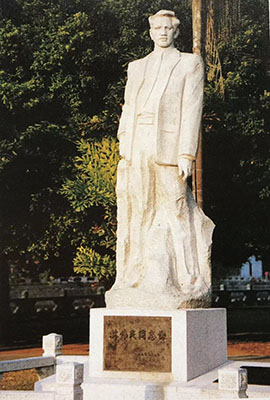
Statue of Lin Wei-min on Yanhe Road in Old Xiangzhou [Photo by Zheng Xiaoyue]
In November 1987 the Zhuhai government erected a white statue of Lin Wei-min on Yanhe Road in Old Xiangzhou to mark the 100th anniversary of his birth. Four years later, another statue was raised in Lin's birthplace, Sanzao Town, in honor of his contributions to the workers movement in modern China.
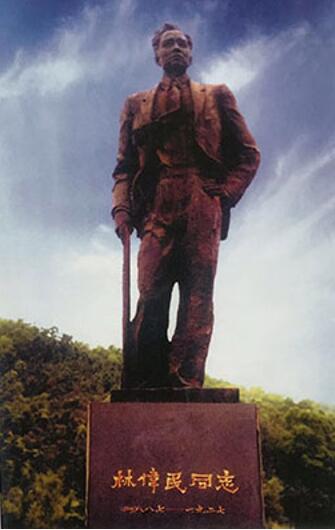
Statue of Lin Wei-min in Sanzao Town erected in 1991 [Photo by Zheng Xiaoyue]
Founded on September 1, 1968, Sanzao Town Weimin School has graduated thousands of elementary pupils. His name is inscribed on the school he attended as a child.
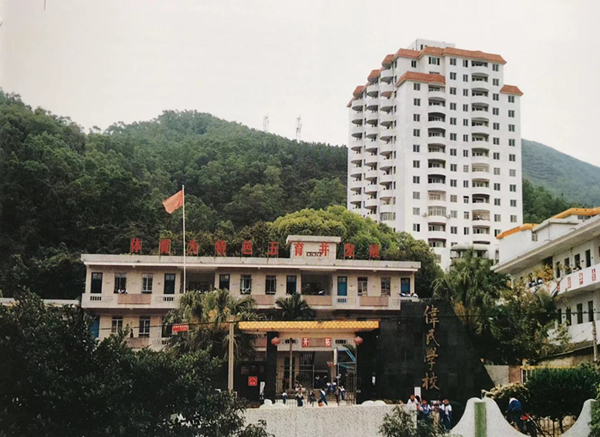
Sanzao Town Weimin School [Photo by Zheng Xiaoyue]
What's more, the brand-new Lin Weimin Memorial Elementary School is under construction south of Golden Beach (Jin Hai'an) Avenue in the town. It will enroll 1,600 pupils before it opens in September.
Meanwhile, the Lin Wei-min & Early Workers Movement Historical Relics Showroom came into trial operation in 2017 in Lin's birthplace, Yuyue Village (鱼月村) of Sanzao Town (三灶镇).

Lin Wei-min & Early Workers Movement Historical Relics Showroom in Yuyue Village of Sanzao Town [Photo courtesy zhdjweixin]
Its first floor showcases Lin's biography, historic backdrop and achievements during the worker movements. Historical photographs, autographs and objects of the early worker movements are on display in the second-floor gallery.
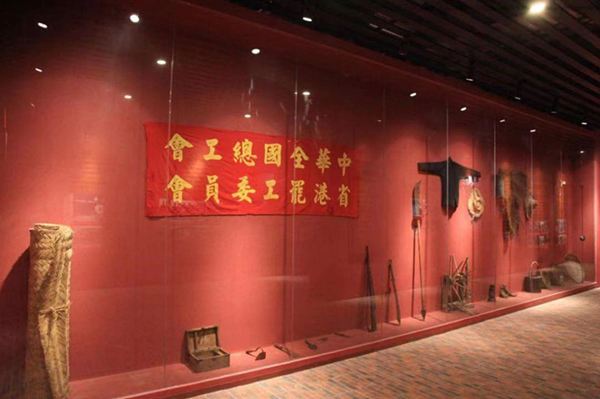
Historical photographs, autographs, and objects in the second-floor gallery [Photo courtesy zhdjweixin]

